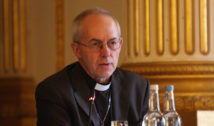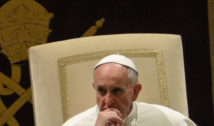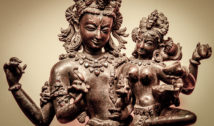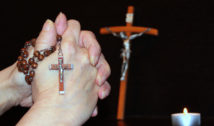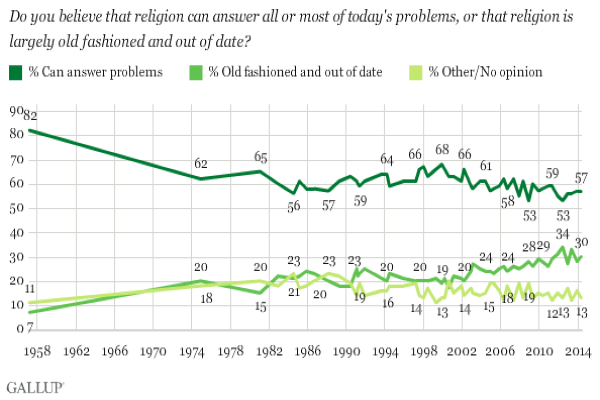
57% of Americans Still Think Religion Can Solve Today’s Problems, But Faithful are Declining
- By Hayli Harding --
- 09 Aug 2015 --

As religiosity has lowered, so has the amount of Americans who feel that religion can fix the problems plaguing the world.
A recently published Gallup poll, which spans over the course of several decades and is likely to continue onward, found that 57% of American citizens have faith that religion can solve “all or most of today’s problems.” This percentage is significantly less than in the 1950’s, when 82% believed that religion could solve the world’s problems. As religiosity has lowered, so has the amount of Americans who feel that religion can fix the problems plaguing the world. Gallup has systematically processed these surveys since the 1950s, asking it once every decade or so. However, since the 1980s, Gallup asked the question multiple times each decade to assess the results more accurately.
The Steady Decline
In 1957, 82% felt that religion could answer the day’s problems. In that decade, citizens displayed higher levels of religiosity, regularly attending religious services, treating religion as highly important and holding an affiliation with a religion. In the 70s, the numbers had dropped to 62%. This remained the case throughout the following two decades, however in the 2000s, it went down to 60% and secularism rose to 25%. Findings from this decade, the 2010s, revealed that 57% of Americans feel that religion can offer answers and guidance in solving the problems of the world. In contrast, Americans appear to be more certain about where they stand with religion, with fewer claiming that religion is outdated.

I we understand our religion, we will be able to solve the majority of our problems and conflicts, if not all of them.
— IslamZin (@zin_islam) July 12, 2015
@beleena9 Islam is the religion which has the force to solve all your problems in life
— Mrs.cristiano (@toomy1malek) July 26, 2015
While these changes in numbers align with the previously released Gallup poll that revealed the massive drop in religiosity, religion hasn’t been completely destroyed in the U.S.A. In fact, there are many faith-based and religion-based organizations that actively work to spread care and compassion through faith. Their numbers have been regularly rising in spite of the lowering numbers in religiosity.








